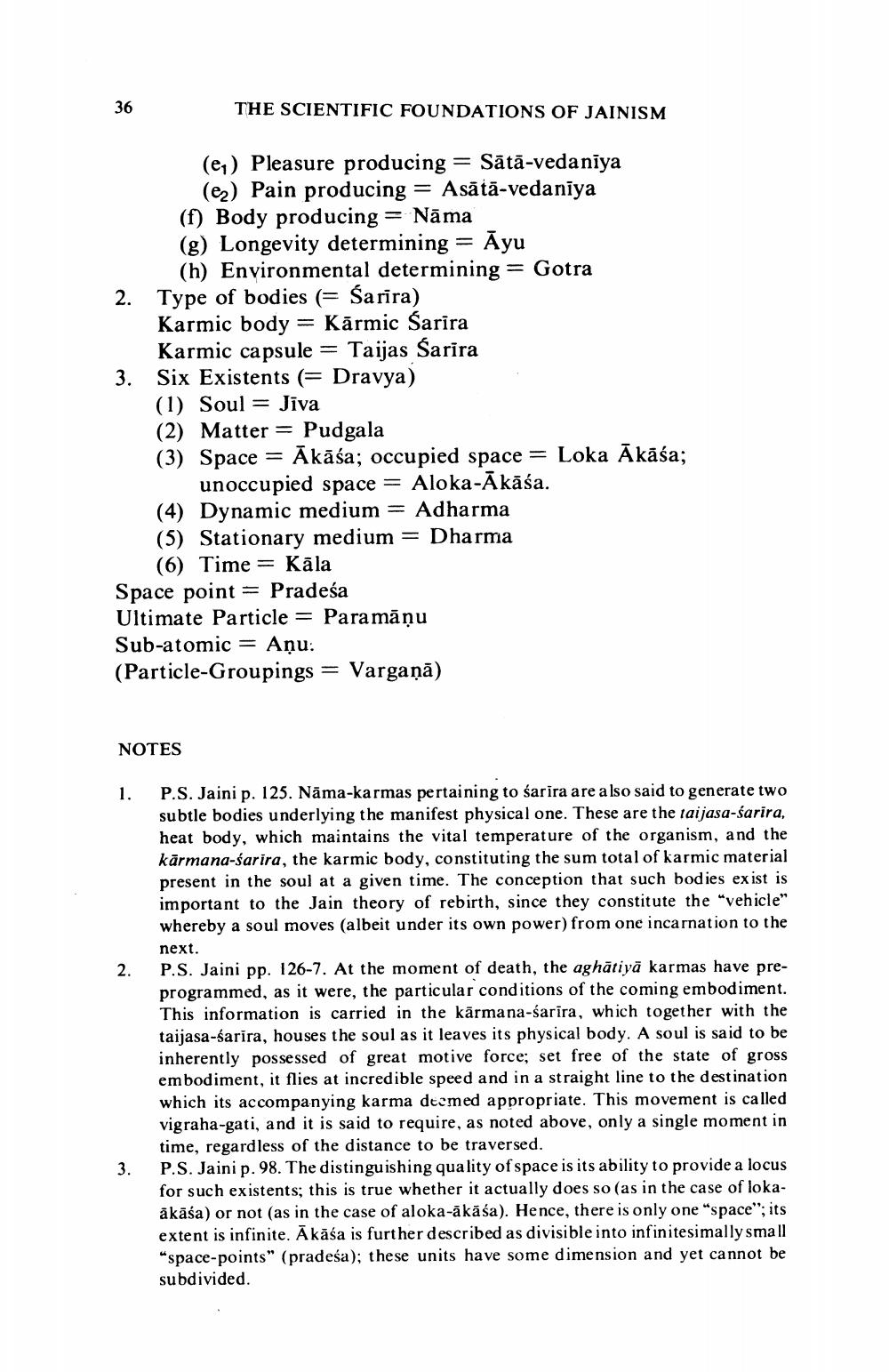________________
36
2.
1.
THE SCIENTIFIC FOUNDATIONS OF JAINISM
NOTES
2.
(e) Pleasure producing (2) Pain producing (f) Body producing= Nāma (g) Longevity determining
Ayu
(h) Environmental determining = Gotra
3.
Space point = Pradeśa
Ultimate Particle Paramāņu
Sub-atomic = Aņu. (Particle-Groupings Vargaṇā)
-
3. Six Existents (= Dravya) (1) Soul Jiva
(2) Matter = Pudgala
=
(3) Space Akāśa; occupied space unoccupied space Aloka-Ākāśa.
(4) Dynamic medium = Adharma (5) Stationary medium (6) Time Kāla
Dharma
=
Sātā-vedaniya Asātā-vedaniya
Type of bodies (= Śarīra) Karmic body = Karmic Sarira
Karmic capsule = Taijas Šarīra
=
=
= Loka Akāśa;
P.S. Jaini p. 125. Nama-karmas pertaining to śarira are also said to generate two subtle bodies underlying the manifest physical one. These are the taijasa-sarira, heat body, which maintains the vital temperature of the organism, and the kārmana-śarira, the karmic body, constituting the sum total of karmic material present in the soul at a given time. The conception that such bodies exist is important to the Jain theory of rebirth, since they constitute the "vehicle" whereby a soul moves (albeit under its own power) from one incarnation to the
next.
P.S. Jaini pp. 126-7. At the moment of death, the aghātiyā karmas have preprogrammed, as it were, the particular conditions of the coming embodiment. This information is carried in the kärmana-śarīra, which together with the taijasa-śarīra, houses the soul as it leaves its physical body. A soul is said to be inherently possessed of great motive force; set free of the state of gross embodiment, it flies at incredible speed and in a straight line to the destination which its accompanying karma deemed appropriate. This movement is called vigraha-gati, and it is said to require, as noted above, only a single moment in time, regardless of the distance to be traversed.
P.S. Jaini p. 98. The distinguishing quality of space is its ability to provide a locus for such existents; this is true whether it actually does so (as in the case of lokaākāśa) or not (as in the case of aloka-ākāśa). Hence, there is only one "space"; its extent is infinite. Akāśa is further described as divisible into infinitesimally small "space-points" (pradeśa); these units have some dimension and yet cannot be subdivided.




